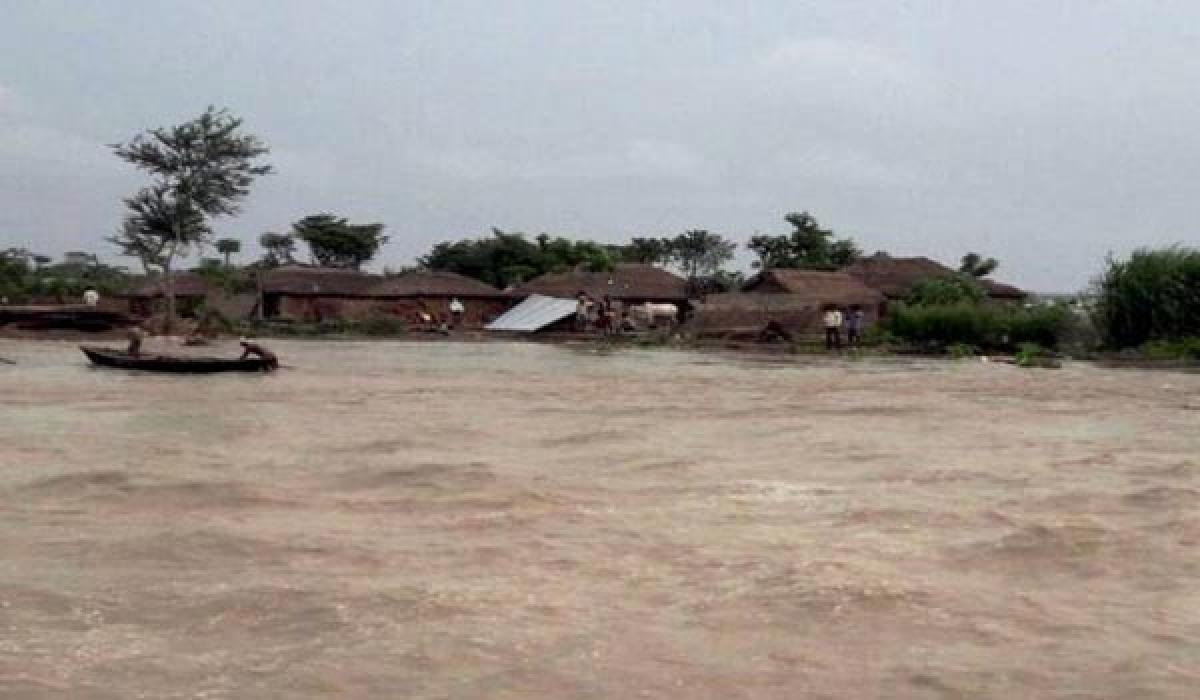Live
- Must-Watch OTT Originals in 2024: The Year’s Best Shows and Movies
- 40 Indian startups secure over $787 mn in a week
- India now formidable force on chess board
- Raghavendra Mutt pontiff visits Tirumala
- Whistleblower of OpenAI found dead in US apartment
- Trump’s US-first policy & India’s strategic latitude
- Chandrababu pays tribute to Potti Sriramulu and Sardar Vallabhbhai Patel
- India may miss TB elimination target
- Revolutionizing Women’s Health: The Era of AI
- Govt bill explains plan for ONOE
Just In

Saharsa (Bihar):At 9 in the morning Gauri Devi is waiting for her 15-year-old son to bring rats. That\'s the only food the family now depends on, being surrounded by flood water. It\'s about 50 kilometres from Saharsa in Salakhua block where the fury of nature has forced hundreds of villagers of Banahi Tola to hunt and eat rats - with no other food available to them.
Saharsa (Bihar):At 9 in the morning Gauri Devi is waiting for her 15-year-old son to bring rats. That's the only food the family now depends on, being surrounded by flood water.
It's about 50 kilometres from Saharsa in Salakhua block where the fury of nature has forced hundreds of villagers of Banahi Tola to hunt and eat rats - with no other food available to them.
"We are surrounded by Kosi's water. All the roads that lead to the main market have been submerged for several days. We don't have any foodgrain and so we are cooking rats," Gauri Devi told IANS.
She and other villagers belong to the Dalit Musahar community and are impoverished. The flood has made life even worse for them. There's no food, no relief from the government -- it's just water everywhere. Marooned in an island in the middle of the river Kosi, these villagers have no alternative source of food except rats.
And rat-catching is a booming business in the region. Several villagers are skilled in hunting the rodent which they sell to the villagers in need.
Bechan Sada is one such hunter. Every day he hunts about 12 kg of rats during the floods and sells these creatures for Rs 40 per kilogram.
"I hunt these rats during monsoon when they move out of the fields and take shelter in the village," Bechan told IANS.
During the monsoon, Banahi Tola is cut off from the rest of the state. To reach there one has to cross several swamps, as it lies between the eastern and western embankments of the Kosi river.
Boats are the main modes of transport to reach the village from Radhanpur Bandh which is about 12 kilometres away. It takes around five hours to traverse this distance, travelling upstream the Kosi.
The village has no toilet and the people defecate in the open. There is no electricity. And with most of the hand pumps out of order, there is no source of clean drinking water either.
According to village headman Kalar Sada, the village lies in the bed of the Kosi river. "So when it rains heavily, we are surrounded by water from all the sides," he told IANS.
Has any relief material reached them?
"So far no relief material has reached our village, even though the Block Development Officer has ordered the PDS shops to deliver the grains to the people," Kalar added.
Saharsa District Megistrate Vinod Singh Gunjiyal pleaded ignorance.
"We have not received any such information as you are saying. But I shall check it," he told IANS.
"The area comes under the western and eastern embankments of Kosi; so there is regular flow of water there. Earlier the government had allotted these people land, but they did not move out as the riverine belt is very fertile," Gunjiyal said.
By Anand Singh

© 2024 Hyderabad Media House Limited/The Hans India. All rights reserved. Powered by hocalwire.com







